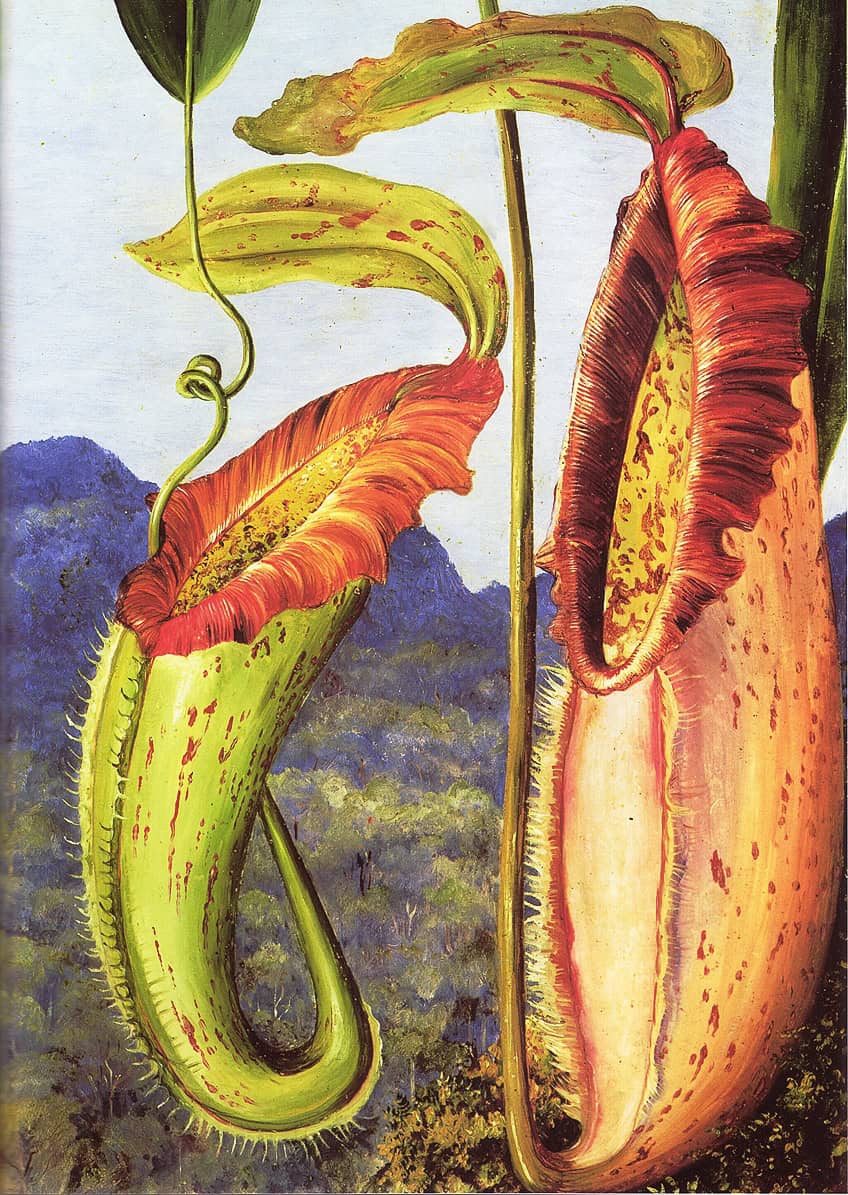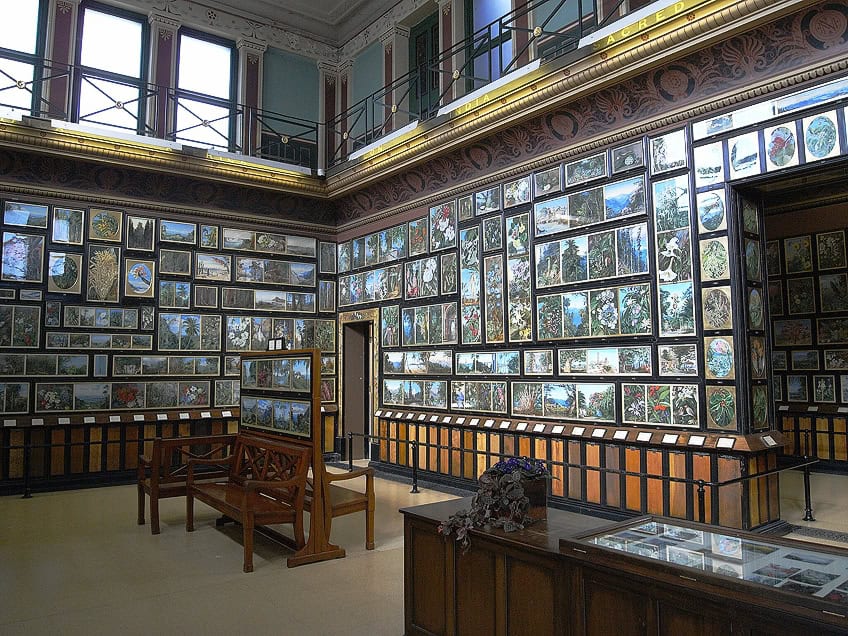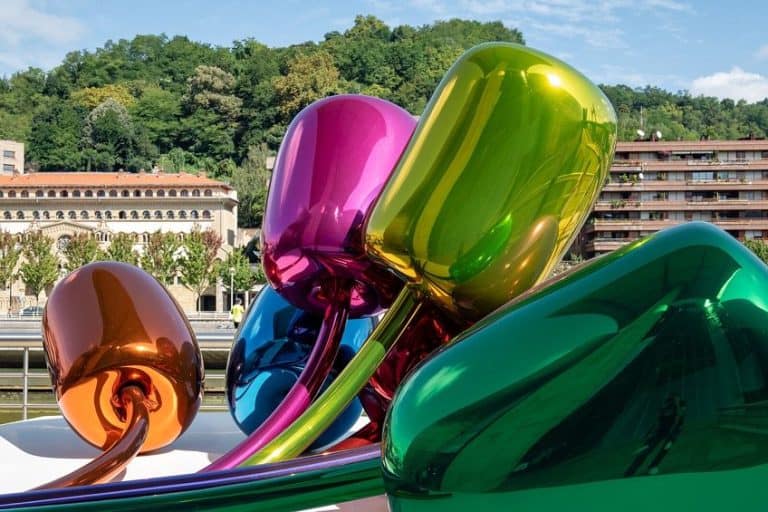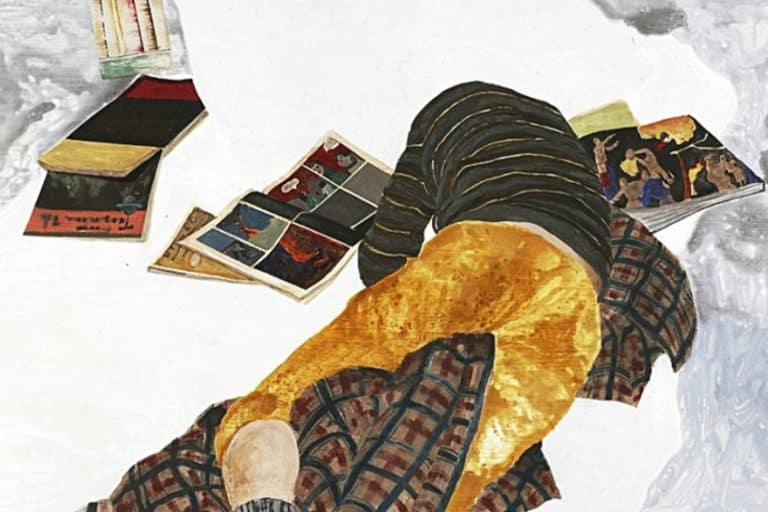Marianne North – Botanical Art Pioneer
Marianne North, a Victorian botanical artist and explorer, left an indelible mark on the art world with her vibrant and meticulously detailed paintings of plants from around the globe. Born in 1830, North defied the societal norms of her time by embarking on solo journeys to remote regions like South America, Asia, and Africa, where she immersed herself in the study and depiction of flora. Her unparalleled collection of over 800 botanical paintings not only captures the beauty of nature but also serves as a valuable record of plant species, many of which are now endangered or extinct. North’s artistic legacy is a testament to her passion for both art and conservation, inspiring generations to appreciate the intricate wonders of the natural world.
Key Takeaways
- Marianne North was a pivotal figure in the intersection of science and art, widely celebrated for her botanical paintings.
- Through her extensive travels, she introduced the Victorian public to global plant diversity, contributing over 800 paintings to the field.
- Her legacy endures at Kew Gardens, where her passion for botanical illustration continues to inspire visitors.
Early Life and Inspirations
| Birth | October 24, 1830 |
| Death | August 30, 1890 |
| Place of Birth | Hastings, United Kingdom |
| Genre of Work | Botanical art |
Marianne North, a respected name in the realm of botanical art, was an English artist born in 1830. Her life’s work exhibits a unique blend of scientific curiosity and artistic talent, exemplifying her as an exemplar of Victorian era botanical artistry. North did not conform to the societal norms of her time; instead, she embarked on global expeditions to portray the world’s flora through her detailed and vibrant paintings. Her achievements include a vast collection of artworks that provide a window into the botanical diversity of the late 19th century.

Her travels were extensive, spanning over 17 countries across six continents during a period when such endeavors by women were rare and challenging. North’s unwavering dedication to botanical art led to the creation of more than 800 paintings, capturing a spectacular range of plant species, many of which were unknown to the English audience of her time.
Her legacy includes the Marianne North Gallery at the Royal Botanic Gardens, Kew, where her collection remains on exhibit—a testament to her contributions to botanical science and art.
Family Background and Education
Marianne North was born on October 24, 1830, in Hastings, to Frederick North and Janet Marjoribanks. Raised in a wealthy family, her upbringing in Norfolk was privileged, which afforded her a level of education not commonly accessible to women in that era. Her family’s wealth and status provided her with the opportunities to explore her interests deeply, especially in the natural sciences.

Influence of Prominent Figures
North’s life was further shaped by several influential people. She notably developed a bond with the acclaimed naturalist Charles Darwin, who had a significant influence on her appreciation of the natural world. Additionally, her friendship with James Fergusson, an architect, proved instrumental in her later years when she designed the gallery to house her work at the Royal Botanic Gardens, Kew.
North’s autobiography, which she penned herself, provides insightful reflections on the impact these figures had on her development both as an artist and a person.
Notable Botanical Artworks
Marianne North’s legacy as a botanical artist is preserved in a collection of over 800 paintings housed in the Marianne North Gallery at the Royal Botanic Gardens, Kew. Notable for their precision and scientific value, her works were a result of extensive travels and dedicated observations. North’s paintings often portray plants in their natural habitats, which sets her work apart from other botanical illustrations that might focus solely on the plants with minimal background detail.

Her dedication to capturing the context of flora provides a comprehensive perspective on botanical life in diverse environments. Among her many artworks, some stand out due to their historic and botanical significance:
- Brazilian orchids: These paintings shine a spotlight on the exotic orchids of Brazil, a subject of fascination for many due to their unique shapes and vibrant colors.
- Javanese volcano: North’s depiction of a Javanese landscape includes the local flora with the volcano as a dramatic backdrop, showcasing her ability to blend landscape with botanical illustration.
- Sikkim Rhododendrons: The Himalayan Rhododendrons of Sikkim are captured with intense detail, highlighting the species’ lush flowers and foliage.
- Australian and New Zealand terrain: Australia’s and New Zealand’s native plants are rendered in situ, signifying North’s reach to distant terrains and their unique botanical wonders.
Her art is not just a feast for the eyes but also an important historical record, as some of the species and landscapes she painted have since changed or diminished, making her contributions invaluable to both art and science.
Global Explorations and Artistic Works
Marianne North’s extensive travels not only led to a greater understanding of global flora but also produced an unprecedented collection of botanical artwork that continues to be celebrated for its detail and accuracy.
Adventures Across Continents
North’s passion for botany and art took her across oceans and continents. Her 14-year journey spanned 17 countries on six continents where she meticulously painted the local vegetation. Each stop on her journey added to a vast collection of over 800 paintings. She visited locations ranging from the Americas to Oceania, and from Europe to Africa, Asia, and beyond.

- Brazil: Explored and painted the diverse plant life.
- Borneo: Documented unique species such as pitcher plants.
- Sri Lanka: Captured the tropical flora on canvas.
- New Zealand: Depicted plants amidst their natural landscapes.
- Canada: Immortalized Canadian vegetation through her art.
North’s dedication to her craft ensured that she traversed terrains from tropical rainforests to arid deserts, enduring the challenges of travel in the Victorian era.
Significant Regions and Contributions
In each region she visited, North not only focused on the botanical aspects but also the cultural and scenic landscapes that surrounded the flora. Her contributions to scientific illustration and botanical studies were monumental.
- India: The vibrant colors and intricate details marked her time there.
- Australia: Captured the unique vegetation indicative of the diverse ecosystem.
- Japan: Blended the delicate aesthetics with the local flora.
- Seychelles: Contributed to the botanical knowledge of the island.
- Chile: The stark contrast and diversity were brought forth in her paintings.
- United States: Included iconic species like the Californian redwoods.

North’s works were significant not just for their artistic merit but also for their scientific value, adding a plethora of visual information about plants from around the world to the scientific community of her time. Her timeless collection now resides within a gallery specifically constructed to house her life’s work at the Royal Botanic Gardens, Kew in London.
This unique gallery was designed by North herself and showcases her extraordinary legacy, bridging the gap between science and art through the lens of exploratory botany.
Legacy and Influence
Marianne North significantly impacted botanical science, culture, and art, leaving a tangible legacy that continues to resonate today.
Role in Botanical Science and Education
Marianne North’s contributions to botany went beyond her paintings. As a female artist in the Victorian era, she collaborated with distinguished botanists like Sir Joseph Dalton Hooker and Charles Darwin, which helped elevate the scientific value of her work. Her detailed representation of flora contributed to the education of botanists and the public alike, by showcasing plant species from around the world in their natural habitats. The Marianne North Gallery at the Royal Botanic Gardens, Kew remains a testament to her contribution, providing educational insights to students and researchers of botanical science.

Cultural and Artistic Impact
Marianne North’s relentless pursuit of botanical beauty through art challenged and expanded the societal views of both women’s roles and the field of botanical painting. Her work as a botanical painter brought the vividness of the world’s flora to the eyes of the Victorian public, thereby influencing both botanical art and the cultural understanding of global plant diversity.
North’s extensive travels and bold life choices made her a cultural icon and an inspiring figure for female artists and botanists worldwide.
Legacy of Marianne North Today
Today, the Marianne North Gallery at Kew Gardens serves as a living legacy, with her collection offering a window into the richness of the world’s plant life. This unique gallery, which was constructed under her own supervision, contains over 800 of her paintings and continues to inspire present-day visitors. Her work at the Royal Botanic Gardens is not only a celebration of botanical art but also serves as a historical archive of many plant species, some of which have seen dramatic changes or decline in their natural environments since North’s time.

Marianne North’s legacy as a pioneering botanical artist and intrepid explorer is one that continues to resonate in the realms of art, science, and conservation. Through her extraordinary talent and dedication, she not only created stunning visual records of plant life from distant corners of the earth but also contributed significantly to our understanding of botanical diversity. Her work serves as a timeless reminder of the interconnectedness between art, nature, and environmental stewardship. As we reflect on North’s remarkable contributions, we are reminded of the enduring power of art to inspire curiosity, appreciation, and preservation of the natural world for generations to come.
Frequently Asked Questions
What Is Marianne North Famous For?
Marianne North is renowned for her extensive work as a botanical artist in the Victorian era. She traveled globally, capturing the world’s flora through her paintings. Her legacy includes a vast collection of plant and landscape artworks, which she created from direct observation during her travels.
What Plants Did Marianne North Discover?
During her explorations, Marianne North identified several previously unknown plant species. Her discoveries are immortalized in her paintings. However, specific plant names she discovered are not detailed in the provided search results, thus requiring further research to list them accurately.
How Many Paintings Are in the Marianne North Gallery?
The Marianne North Gallery at the Royal Botanic Gardens, Kew, houses over 800 paintings by North. This unique collection was gathered throughout her travels across 17 countries on six continents within 14 years, between 1871 and 1885.
Isabella studied at the University of Cape Town in South Africa and graduated with a Bachelor of Arts majoring in English Literature & Language and Psychology. Throughout her undergraduate years, she took Art History as an additional subject and absolutely loved it. Building on from her art history knowledge that began in high school, art has always been a particular area of fascination for her. From learning about artworks previously unknown to her, or sharpening her existing understanding of specific works, the ability to continue learning within this interesting sphere excites her greatly.
Her focal points of interest in art history encompass profiling specific artists and art movements, as it is these areas where she is able to really dig deep into the rich narrative of the art world. Additionally, she particularly enjoys exploring the different artistic styles of the 20th century, as well as the important impact that female artists have had on the development of art history.
Learn more about Isabella Meyer and the Art in Context Team.
Cite this Article
Isabella, Meyer, “Marianne North – Botanical Art Pioneer.” Art in Context. May 20, 2024. URL: https://artincontext.org/marianne-north/
Meyer, I. (2024, 20 May). Marianne North – Botanical Art Pioneer. Art in Context. https://artincontext.org/marianne-north/
Meyer, Isabella. “Marianne North – Botanical Art Pioneer.” Art in Context, May 20, 2024. https://artincontext.org/marianne-north/.











